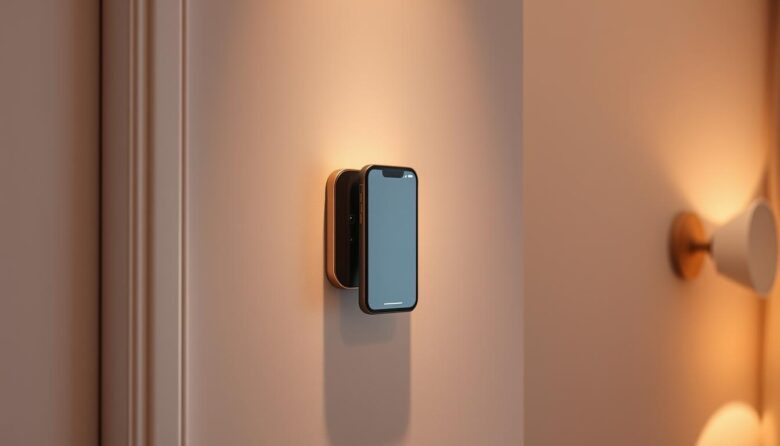Upgrading home protection doesn’t require expensive gadgets. With a little creativity, outdated devices can become powerful tools for modern safety. This guide reveals how to transform unused tech into a smart monitoring solution that learns and adapts over time.
Traditional surveillance methods often miss critical details. Newer approaches analyze footage instantly, identifying unusual activity without constant human oversight. These systems recognize faces, vehicles, and unexpected movements, providing alerts only when genuine risks emerge.
Machine learning algorithms enable continuous improvement. Over weeks, the setup refines its understanding of normal patterns, minimizing false alarms. Homeowners gain peace of mind through automated threat detection that grows more precise with use.
This approach combines affordability with cutting-edge technology. By repurposing existing hardware, users avoid costly equipment purchases while achieving professional-grade results. The following sections detail step-by-step implementation for creating a responsive, self-improving monitoring network.
Understanding the Role of AI in Home Security
Modern home monitoring systems now leverage learning algorithms to separate genuine threats from everyday distractions. Unlike basic motion sensors, these solutions analyze shapes, sizes, and movement patterns to prevent unnecessary notifications.
How AI Reduces False Alarms
Traditional systems trigger alerts for any movement, whether from falling leaves or pets. Object-based motion detection identifies specific targets like humans or vehicles, ignoring irrelevant activity. Studies show this approach cuts false warnings by 90%, letting users focus on real concerns.
Facial Recognition and Advanced Detection Features
Sophisticated software compares live footage with stored profiles to recognize family members or frequent visitors. Unknown individuals prompt immediate notifications, while familiar faces don’t. Systems also detect vehicles, animals, and unusual behaviors like loitering.
Machine learning models refine accuracy over time by studying property-specific patterns. This continuous improvement ensures fewer errors caused by shadows or weather changes. Combined with real-time alerts, these tools create layered protection without overwhelming users.
Converting an Old Phone into a Security Camera
Breathing new life into retired devices unlocks surprising potential for home monitoring. With basic hardware and free software, outdated handsets become intelligent observation tools capable of detecting unusual activity.
Essential Components and Hardware Setup
Three core elements transform idle devices into surveillance tools. A sturdy mount keeps the lens stable, while weatherproof casing protects outdoor units from extreme temperatures. Continuous power solutions like USB adapters or solar panels prevent unexpected shutdowns.
Free apps like Alfred or IP Webcam enable real-time streaming and motion detection. These platforms offer cloud storage options and customizable alert thresholds. For optimal performance, ensure Wi-Fi signals remain strong at the chosen installation point.
Step-by-Step Installation Tips
Position the repurposed device 7-9 feet high, angled downward for maximum coverage. Test different placements using the app’s live preview before permanent mounting. Secure cables discreetly to deter tampering and maintain clean sightlines.
Configure zones within the app to ignore routine movements like swaying trees. Most systems mirror professional features, allowing sensitivity adjustments for specific objects. Pair with smart lights or alarms through IFTTT for automated responses to detected threats.
Weekly tests verify consistent operation. Clear lens covers monthly and update software quarterly to maintain peak performance. This approach delivers enterprise-level monitoring without recurring fees.
Exploring the Benefits of a Smartphone Security Camera AI
Modern surveillance gains new depth when paired with adaptive technology. Systems using artificial intelligence analyze footage faster than humans, distinguishing between routine events and genuine risks. This precision transforms basic setups into sophisticated guardians that learn household patterns.
Enhanced Monitoring with Real-Time AI Alerts
Immediate notifications separate advanced systems from outdated models. When unexpected motion occurs, homeowners receive alerts within seconds—even while miles away. These warnings include snapshots or video clips, enabling quick verification of potential threats.
Customizable settings let users prioritize specific triggers. Ignore squirrels but get notified about unfamiliar vehicles. Integrations with smart locks or lights create automated defenses, like illuminating dark areas during unauthorized entry attempts.
Behavioral analysis identifies unusual patterns, such as prolonged loitering. Machine learning improves accuracy by studying daily routines, reducing errors caused by shadows or weather. Over time, the system predicts risks before they escalate, offering layered protection without constant oversight.
Professional setups often lack this flexibility. Repurposed devices with intelligent software provide enterprise-grade features at minimal cost. Users maintain control through intuitive apps, adjusting sensitivity or response protocols as needs evolve.
Key Features of Modern AI-Powered Cameras
Cutting-edge surveillance tools now offer precision once exclusive to high-end installations. These systems combine multiple layers of analysis to deliver actionable insights, adapting to both residential and commercial needs. Their ability to process visual data in real time creates responsive protection networks that evolve with user requirements.
Motion Detection and Object Tracking
Advanced algorithms categorize movements by type, ignoring routine activity like rustling bushes. Object tracking maintains focus on targets across different angles, ensuring continuous monitoring even as subjects move. This prevents blind spots during critical moments, such as unauthorized entries or package theft attempts.
Systems distinguish between humans, vehicles, and animals using size and movement patterns. Some models follow targets while adjusting zoom levels automatically. This eliminates manual adjustments and ensures clear identification of potential threats.
License Plate Recognition and Unusual Behavior Detection
Specialized software captures vehicle details day or night, even at high speeds. License plate recognition converts images into searchable data, creating audit trails for investigations. This feature helps track suspicious cars or monitor authorized access in gated communities.
Behavior analysis flags anomalies like repeated circling or abandoned objects. Machine learning identifies patterns inconsistent with normal activity, such as sudden running or prolonged lurking. These alerts enable faster responses before situations escalate, offering proactive rather than reactive protection.
Integrating Your DIY System with Smart Home Devices
Connecting DIY monitoring tools with existing home networks amplifies their effectiveness. Modern security systems thrive when paired with voice assistants and automated routines, creating unified protection layers. This synergy allows homeowners to manage surveillance alongside other devices effortlessly.
Voice Command Integration with Alexa and Google Assistant
Popular platforms like Alexa and Google Assistant enable hands-free control. Assign names like “Porch Viewer” to repurposed devices for quick access. Commands such as “Show garage feed” or “Start backyard recording” simplify monitoring during busy moments.
Platforms like Ring demonstrate how integration enhances responsiveness. Users review live footage on smart displays while adjusting thermostats or locking doors. Pairing facial recognition with voice profiles personalizes alerts, ensuring only relevant notifications break the silence.
Setting Up Automated Home Security Workflows
Create automation rules that trigger lights when motion appears. Outdoor fixtures flashing during unauthorized activity often deter intruders. Schedule routines to arm security systems at bedtime or disable alerts during family movie nights.
Advanced setups activate sirens or send group alerts when facial recognition detects strangers. Link cameras to smart locks for instant door sealing during threats. These workflows operate silently in the background, blending robust protection with daily convenience.
Smartphone Security Camera AI: A Comprehensive Buyer’s Guide
Choosing the right monitoring tools requires balancing technical specs with real-world performance. Top-rated systems like ADT with Google Nest integration score 9.8/10 for advanced features like facial recognition and tailored alerts. The Ring Stick Up Cam Plug-In offers budget-friendly plans starting at $4.99 monthly, while Canary provides environmental sensors without professional setup hassles.
Resolution matters more than megapixels alone. Look for 1080p HD video paired with 120-degree viewing angles to cover wide areas without distortion. Infrared night vision should maintain clarity beyond 25 feet, and two-way audio adds interactive capabilities during incidents.
Storage options split systems into cost categories. Free cloud backups suit light users, but frequent recordings demand local storage via microSD cards. ADT’s professional monitoring excels for 24/7 response, while DIY enthusiasts prefer Canary’s self-managed approach.
Evaluate hidden expenses beyond initial pricing. Subscription tiers unlock critical functions like extended video history or multi-camera support. Ring’s customizable zones reduce false alerts but require paid plans for full functionality. Total ownership costs include accessories like solar panels or mounts for permanent installations.
Balancing detection accuracy with user control defines modern solutions. Systems learning household patterns minimize unnecessary notifications while prioritizing genuine threats. This guide helps identify options matching specific needs, whether prioritizing affordability, automation, or expandability.
Reducing False Alarms with AI-Enhanced Detection
False alerts frustrate users and undermine trust in monitoring systems. Advanced analysis tools now address this challenge by filtering out irrelevant triggers while maintaining vigilance against genuine threats. This evolution transforms how homes stay protected without constant interruptions.
Minimizing Unwanted Alerts
Object-based motion detection eliminates 90% of unnecessary warnings by focusing on specific targets. Instead of reacting to every movement, systems analyze shape and behavior patterns. Falling leaves or swaying branches no longer trigger alerts designed for human activity.
Machine learning models study property layouts over weeks. They distinguish between delivery personnel and trespassers by memorizing regular visit times. Even pets wandering through monitored zones get ignored through advanced recognition features.
Customizable sensitivity settings adapt to environmental changes. Reduce notifications during windy days or adjust zones to exclude busy sidewalks. These configurations ensure critical events like unauthorized entries always receive immediate attention.
Studies confirm these improvements cut false warnings dramatically. Users spend less time reviewing footage and more time trusting their system’s accuracy. Combined with real-time threat verification, this approach creates reliable protection layers that respect homeowners’ peace of mind.
User-Friendly Tips for System Maintenance
Consistent upkeep transforms basic monitoring into a reliable shield. Regular checks preserve detection accuracy while adapting to environmental shifts. These strategies keep systems sharp without technical complexity.
Regular Software Updates and Diagnostics
Enable automatic updates to maintain advanced features and vulnerability patches. Schedule monthly manual checks during low-activity periods. Most platforms provide diagnostic dashboards showing connectivity strength and storage health.
Review error logs to spot recurring issues like motion detection gaps. Cloud-based systems often self-troubleshoot, while local setups may need router reboots. Consistent updates ensure algorithms stay current with emerging patterns.
Optimizing Camera Settings for Best Performance
Adjust motion sensitivity monthly to account for seasonal changes. Reduce winter settings to ignore snowfall while maintaining human detection. Create recording schedules aligned with household routines to conserve storage space.
Test different angles quarterly using the live preview feature. Clean lenses with microfiber cloths to prevent video quality loss. Pair these optimization steps with storage management tools for seamless operation year-round.



